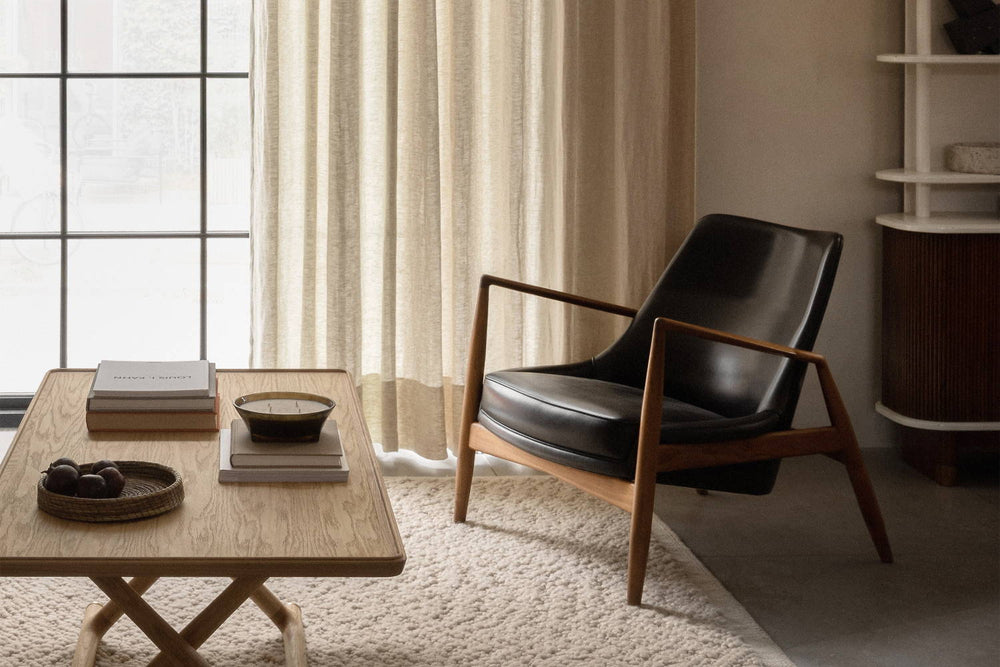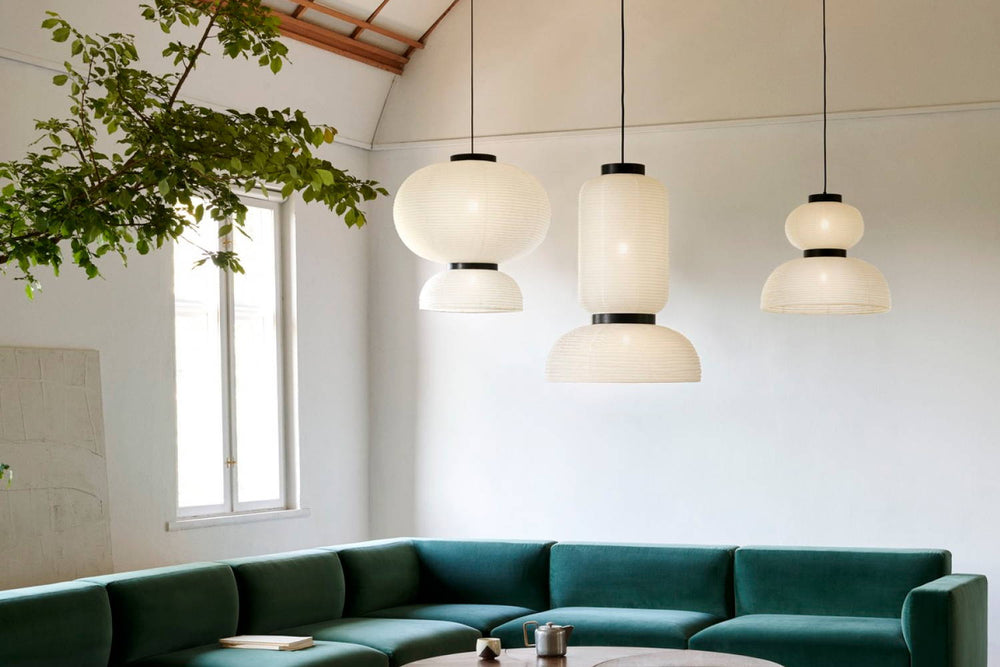A beautifully lit room demands more than one light source. Learn to layer lighting in tandem with a room's various functions.
1. Review primary & secondary lighting requirements.
Lighting gives a room its overall character—but must also serve a room (and its occupants) on a practical level. A single light source can rarely do both, which is why layered lighting becomes key. Most rooms are used in a variety of ways at various times, and having the proper lighting for each of those occasions is essential to making it both a functional and nuanced space.
Is your dining room a separate space or is it part of a larger kitchen scheme? Does your living room have more than one seating area? Whatever the space, the right lighting choices should be informed by a clear understanding of the many purposes a room will serve, whether regularly or only on select occasions.
SHOP THE LOOK
LAYERING LIGHT: 3 Key Lighting Groups
When creating a layered lighting composition, focus on three basic lighting groups: ambient lighting, which is the primary light source in a room or space; task lighting, which is the more focused, bright light needed to complete necessary tasks; and accent lighting, which is the subsidiary lighting that helps give a room subtlety and expression.
2. Start with elegant ambient lighting.
Ambient lighting, in the most broad sense, refers to the primary light that illuminates a dark room. The ambient light source can take the form of almost any kind of lighting fixture—pendant lights, modern chandeliers, sconces—but typically involves overhead lighting, like a ceiling lamp, or recessed lighting.
When thinking about ambient lighting, think in terms of lighting that's accessible and close to a room or space's entrance. No one wants to enter a dark room only to waste time finding an elusive light switch. Ambient light doesn't need to be particularly bright, but should imbue the room with enough light to make the space fully visible.
SHOP THE LOOK
3. Add striking task lamps.
Task lighting—in essence, a light that doesn't need to be on display all the time, but is absolutely necessary at other times—may be particularly important in some rooms more than others; in a kitchen, say, more so than in a family room. But it remains a key element in any room's layered lighting scheme. A light source capable of dispersing bright, directional, pinpointed lighting—like a living room reading lamp, a home office desk lamp, or a kitchen counter pendant light—brings versatility and dimension intrinsic to a thoughtfully lit, fully functional room.
When installing ceiling task lighting—whether modern pendant light, recessed lighting, or track lighting—proper placement and a degree of control are particularly important. Task lighting should fully illuminate the areas where the majority of essential tasks are completed, freeing the rest of the room or space from the harshest light. And being able to control the output of task lamps allows for more flattering, nuanced lighting when full-capacity illumination is not needed.
SHOP THE LOOK
4. Finish with gorgeous accent lighting.
Choosing accent lighting is the fun portion of any layered lighting project. Once ambient lighting and task lighting are in place, all that remains are the more decorative, attention-getting lighting sources. What constitutes accent lighting depends on subjective things, like personal taste and esthetics, but accent lighting is the key contributor to a room's visual and emotional expression.
Whether a statement chandelier, an artful series of wall lights, or an iconic Mid Century floor lamp, accent lighting defines a room's character in the same way a beautiful piece of furniture does, and imbues a room with nuance that shows off a space—and its occupants—in the most flattering light. Combined with ambient lights and task lights, accent lighting helps complete an exhilarating interior composition lighting.
SHOP THE LOOK





